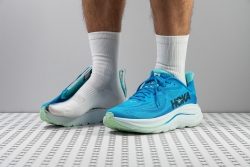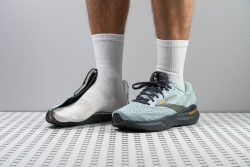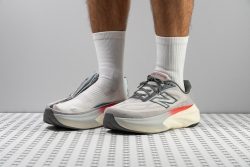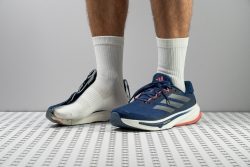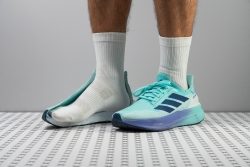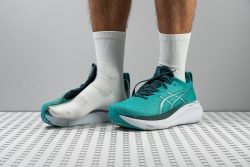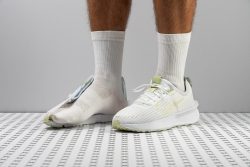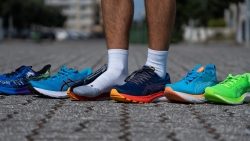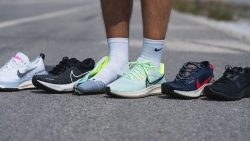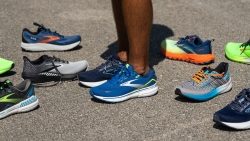7 Best Running Shoes For Walking in 2025
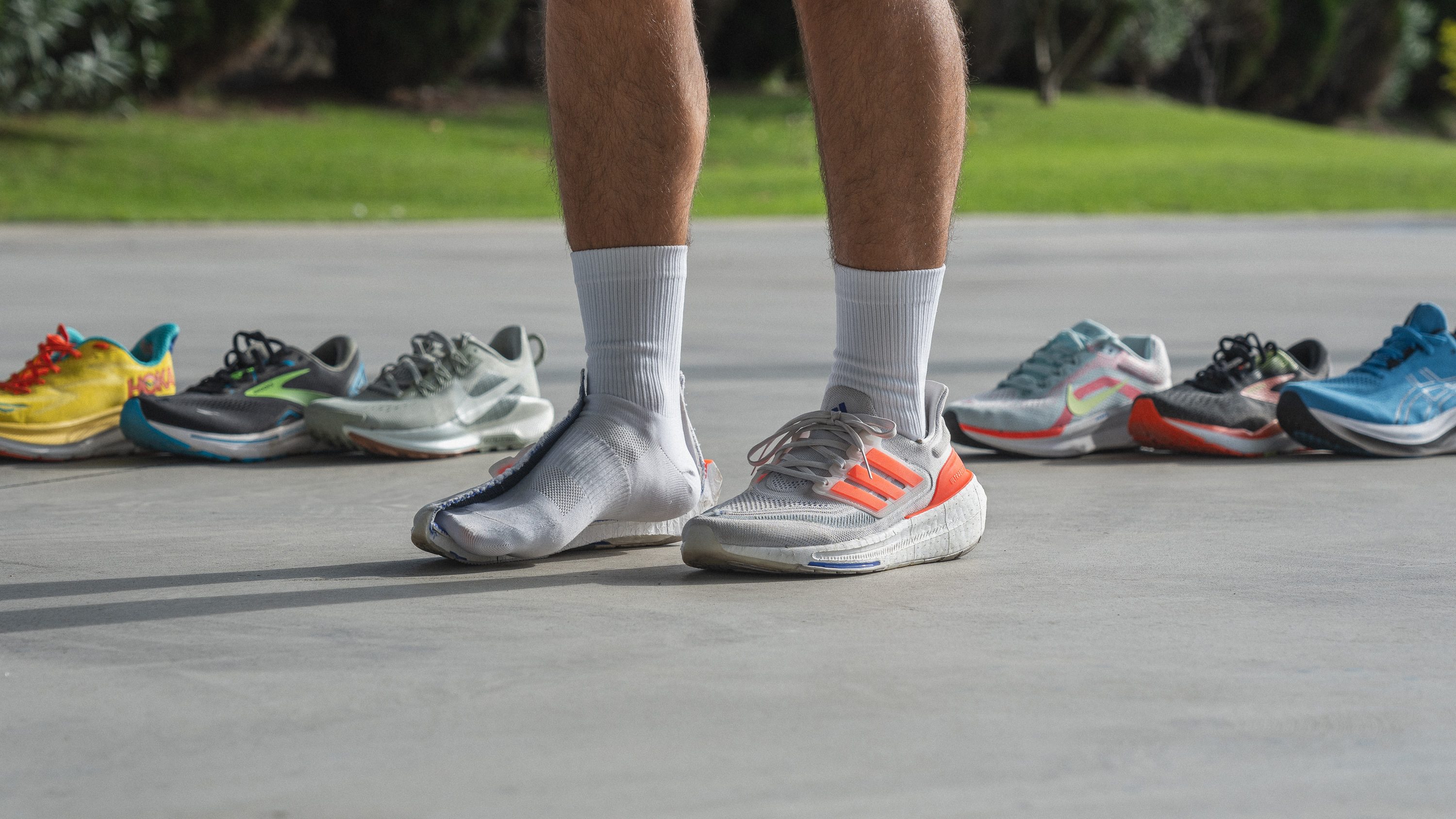
We buy shoes ourselves. We earn commissions when you buy through us, at no extra cost. Why trust us
Running shoes have the best cushioning that works wonderfully not just for marathons but also for your daily casual walks. If you want to have just one shoe to rock your daily jogs and stay comfortable all day long, there are a lot of running shoe options that can double as your pair of walking shoes.
In this list, we are giving you the cream of the crop in terms of cushion. We also test the shoes' support, stability, durability, breathability, and other features. Now it's on you to choose a shoe that matches your preferences!
How we test running shoes for walking
There are a lot of things we should consider before choosing the best running shoes for walking. And to make sure we end up with the finest, we put them through a series of tests in our lab. Here, we do the following:
- Use a durometer, smoke machine, dremel, tyre tread gauge, and other tools to measure 20+ parameters
- Cut the shoes in half and into pieces to perform more tests that could be done accurately only on shoes cut in half
We also run in each pair to be able to combine first-hand experience with the shoe with our lab data. We buy all the running shoes that we test with our own money to avoid brand bias.
Best running shoes for walking overall
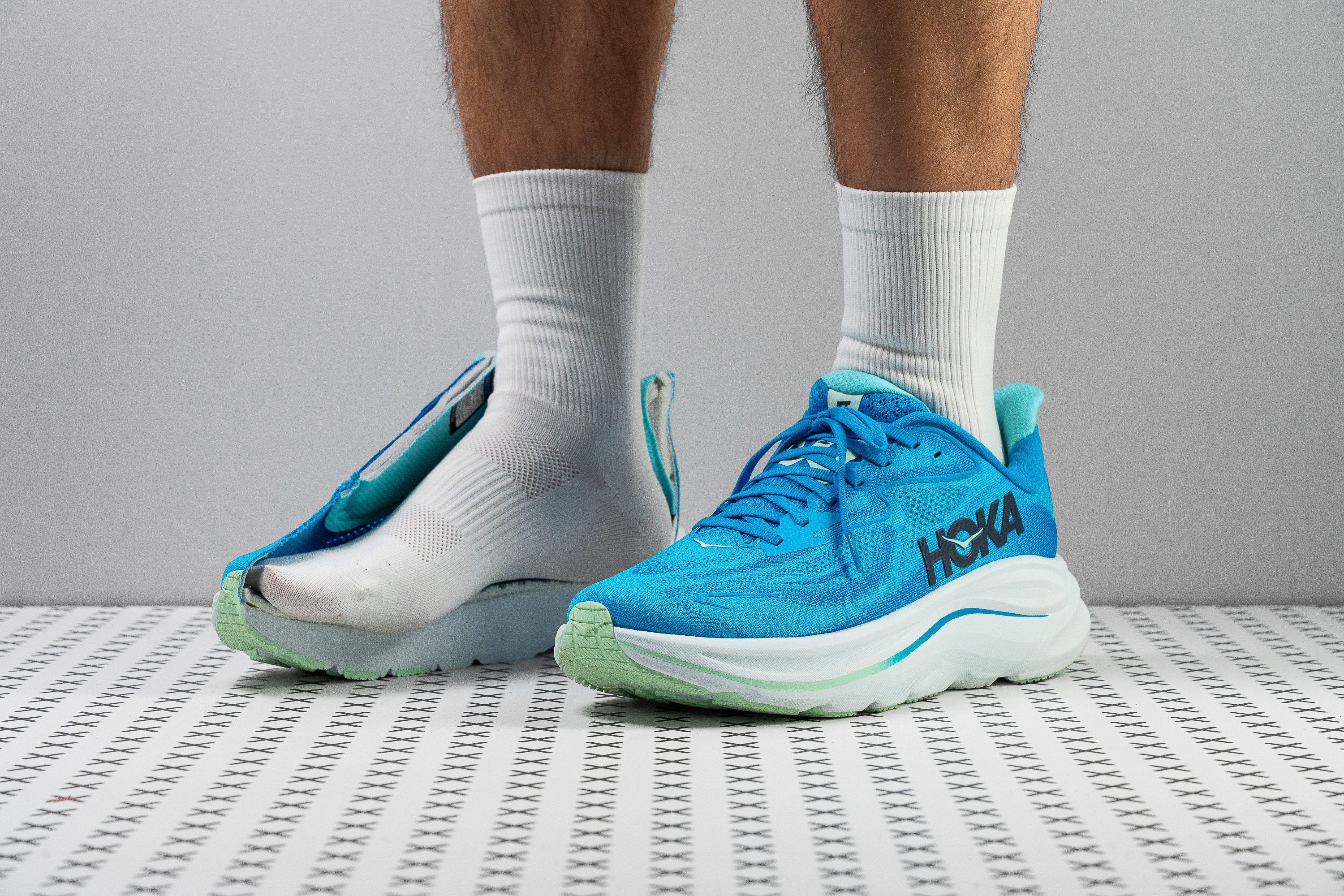




















































What makes it the best?
Whether taking leisurely strolls around the park or having relaxed runs in the city, the Hoka Clifton 10 kept our legs fresh with its maximum cushioning and stable ride. Despite its chunky nature, our lab tests show it’s actually flexible and easy on the feet, making it our top walking-running shoe.
The comfort and impact protection Clifton 10 brings is off the charts, with a towering 44.4 mm heel stack, 10.2 mm above the average! It erases ground feel completely and spoils us with its ultra-soft cushion, validated by our durometer with a 17.1 HA reading.
Despite its height, we felt pretty surefooted during testing. It features high midsole sidewalls that stabilise the ride and a broad base that allows us to land safely. Our calliper confirms its vast nature with 116.9 mm in the forefoot and 97.8 mm in the heel.
What we liked about Clifton 10 is how versatile it is despite its comfort and support-centred build. It feels natural on foot, and our bend test shows it’s even 6.7% more adaptive than average, perfect for casual strolls.
We expected a major upgrade in the foam, yet it remains dull and outdated. Those craving a more dynamic experience shouldn’t get this pair.
Pros
- Superb joint protection
- Wider toebox improves toe splay
- Comfortable upper
- Stable ride despite its high stack height
- Works well for heel strikers
- Ideal for long runs
- Versatile for daily walking or jogging
- Achilles-friendly heel collar design
- Traction improvements
Cons
- Needs a better foam ASAP
- Notable weight gain from v9
- Feels more Bondi than Clifton
- Non-gusseted tongue
Best stability running shoes for walking



















































What makes it the best?
The Brooks Adrenaline GTS 24 features a firm base and the GuideRails technology that makes it our top stability choice among the walking-running shoes we tested in the lab. We felt confidently secure with each stride we took without the shoe feeling too harsh on the foot. In fact, our tests prove its surprising flexibility!
The 39.0 mm heel stack we measured added comfort to long mileage. It’s more than enough even for the heaviest rear strikers. The cushion received a 25.1 HA durometer rating, which means it’s 19.5% firmer than average. This level boosts both the shoe’s stability and responsiveness.
Besides the robust base, the midsole sidewalls are raised because of the GuideRails on both medial sides. This creates a secure fit as it hugs our feet in place. Excessive motions are easily reduced as the shoe keeps us centred.
To our surprise, GTS 24 emerged 19.9% more flexible than average! Despite all its support features, it bends easily with our natural foot movements.
Unfortunately, we warn caution that the toebox sits a bit low which may feel uncomfortable for some. Those who need more vertical space should find a more accommodating pair.
Pros
- Stack height upgrade!
- Reliable support
- Breathable mesh with oversized vents
- Price remains unchanged
- Available in 4 width options
- Good durability
- Plush tongue for top comfort
- Ideal for heel strikers
- Foam upgrade to DNA Loft v3
Cons
- Firmer-than-expected midsole
- High drop may feel too steep
- Toebox height is a bit low
- Non-gusseted tongue
Running shoes for walking with the best shock absorption
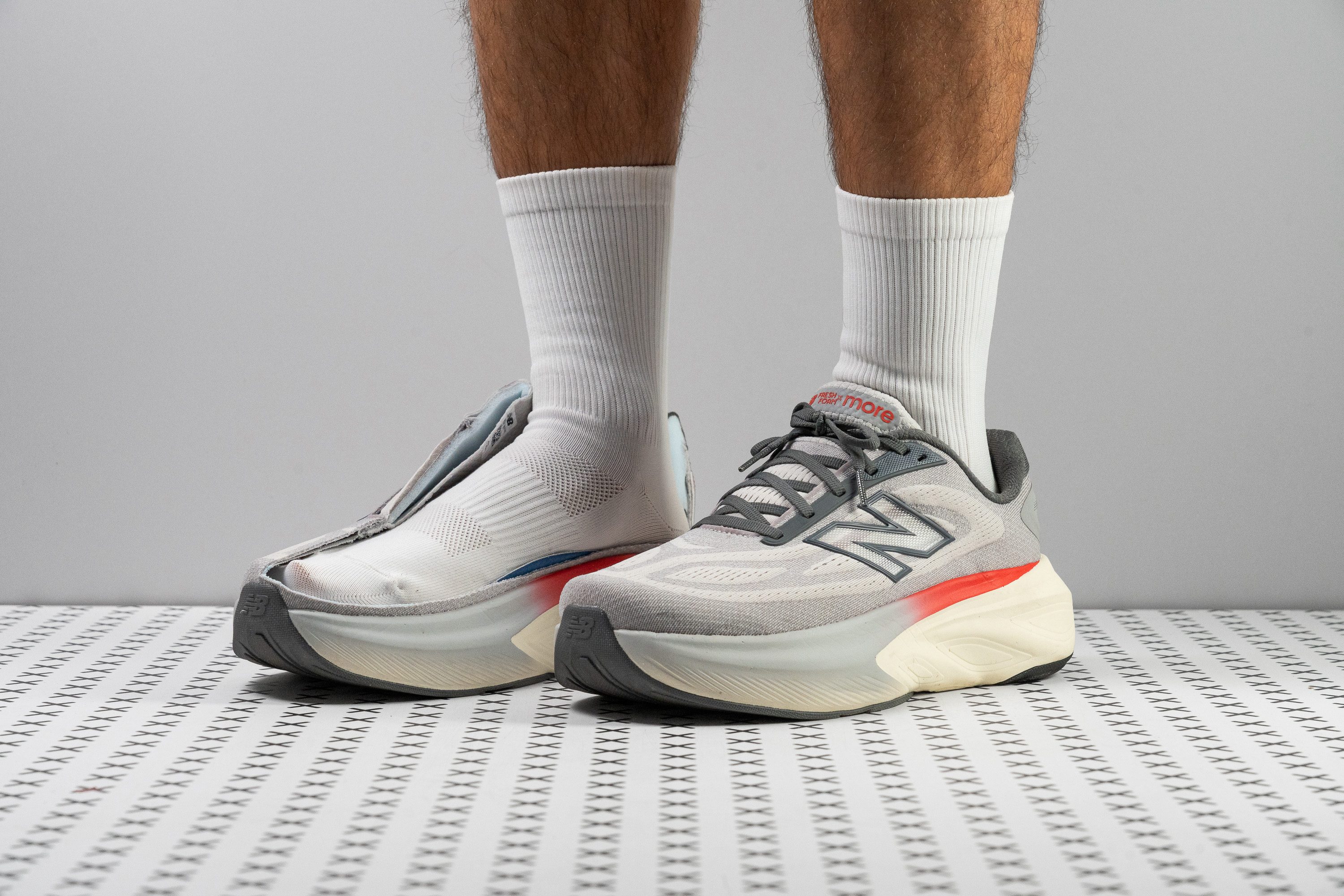













































What makes it the best?
Through our runs and lab tests, our search for the best shock-absorbing walking-running shoe came to a close after we discovered the New Balance Fresh Foam X More v6. This shoe perfectly captures maximum comfort without losing stability and bounce, making it a no-fuss trainer for burning recovery miles.
The More v6 is all about muscle protection and minimum impact. Measuring its shock absorption, it returned top-level ratings of 152 SA and 144 SA in the heel and forefoot, respectively. It’s able to reduce the forces of road running on our legs even more through its generous 41.8/38.5 mm stack height.
The More v6 feels far from boring, with its heel returning a good energy score of 60.1%.
Despite the thick platform, we’re beyond impressed that it maintains sturdy support. It does so through its massive 122.5/102.0 mm base, keeping us well-planted with every step.
Unfortunately, its comfort level goes down for runners with high-volume feet. Those who need generous vertical clearance will find the 24.4 mm toebox height restricting.
Pros
- Record-breaking shock absorption
- Wide platform ensures stability
- Super-plush foam
- Improved energy return
- Cosy upper
- No price hike this year
- Ideal for forefoot strikers
- Solid durability
- Semi-gusseted tongue for secure lockdown
- Good torsional flexibility despite its size
Cons
- Narrow, low-volume interior fit
- Still a heavy shoe
- Weak airflow
- Low drop doesn't work for everyone
Best running and walking for wide feet
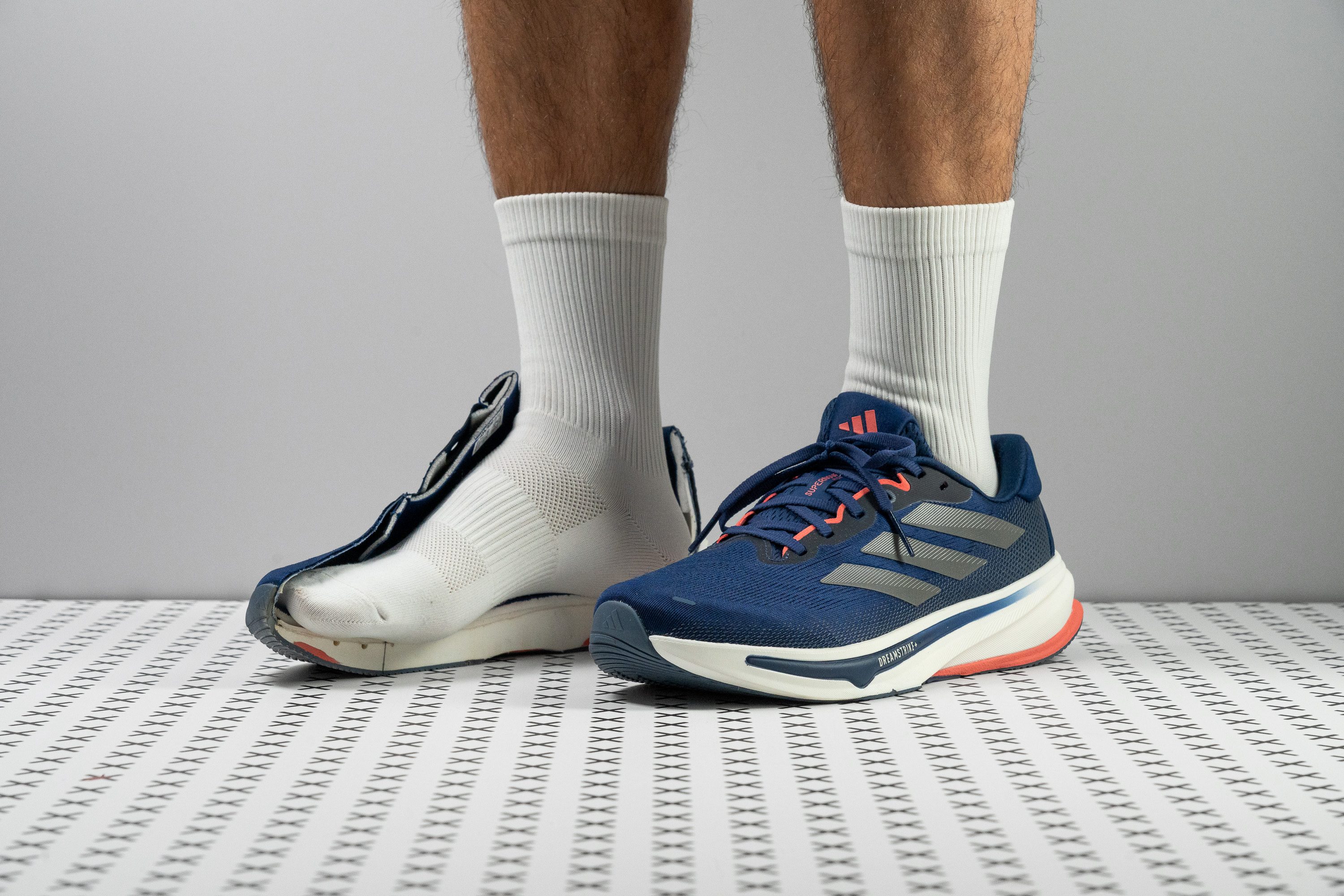

















































What makes it the best?
After performance tests in the lab and on the streets, we found the Adidas Supernova Rise 2 to be the best walking-running shoe for wide feet. It boasts a wide and tall toebox design for comfort, while its midsole feels balanced and responsive. Meanwhile, its airy and flexible build offers a seamless experience.
We created a gel mould to capture the shoe’s exact dimensions, particularly in the toebox area. The widest part measures 98.7 mm, 3.5% above average, accommodating broad-footed folks comfortably. It features a tall design that reaches 28.4 mm, giving our toes room to breathe.
The Dreamstrike+ midsole feels well-balanced and springy, backed up by our 21.0 HA durometer reading. Below is a firmer foam to add a touch of support to our strides.
The shoe’s natural and effortless feel stems from its light and flexible nature. Our scales reveal it’s only 9.1 oz (257g), while our bend test shows it’s 37.4% more flexible than average. We found it highly versatile, even for activities beyond walking and running.
A minor frustration is its non-gusseted tongue, as it may disrupt a potentially seamless ride. If this is a dealbreaker, we recommend checking out alternatives.
Pros
- Lighter than version 1
- Comfortable yet breathable upper
- Cold-proof PEBA midsole
- Stable ride with Support Rods
- Reflective accents for night visibility
- Maintains competitive price tag
- Responsive Dreamstrike+ foam
- Flexible, natural running experience
- Great for walking
Cons
- Outsole lacks Continental
- Not cushioned for forefoot strikers
- Still lacks a gusseted tongue
Running shoes for walking with the best durability



















































What makes it the best?
The Adidas Ultraboost 5X offers a mix of excitement and ease in our runs through its springy yet flexible midsole. In the lab, it surprises us with unmatched all-around wear resistance, beating the standard across the board. Because of this, it’s our best durable walking-running shoe.
Starting from the bottom, the Ultraboost 5X features the grippy Continental rubber. It’s reliable not only against slips, but also against underfoot debris. In our Dremel test, it showed a tiny 0.4 mm dent, proving it will last countless miles. Even the toebox and heel padding remained intact after our Dremel test, so we awarded them the maximum 5/5 durability score.
Despite its rugged build, the midsole is fluid. Our bend test shows it’s 24.0% more flexible than average, making it comfortable for walks and casual wear.
When we wanted to pick up the pace and run, the midsole allowed us to do so. We enjoyed a pep in our every step, proven by high energy return scores of 66.0% in the heel and a remarkable 70.1% in the forefoot.
During warmer days, the plush knit upper lacks airflow. Those searching for maximum breathability should try other shoes.
Pros
- Works well as a casual sneaker too
- Premium, high-quality materials throughout
- Stretchy, roomy upper
- Fantastic energy return
- Built-to-last durability
- Best Ultraboost version to date
- Stable for heel strikers
- Increased stack height
- Noticeable weight reduction
- Grips very well
Cons
- Steep price
- Ventilation falls short of expectations
- Limited to slower paces
- Less stack height than advertised
Budget running shoes for walking with the best traction
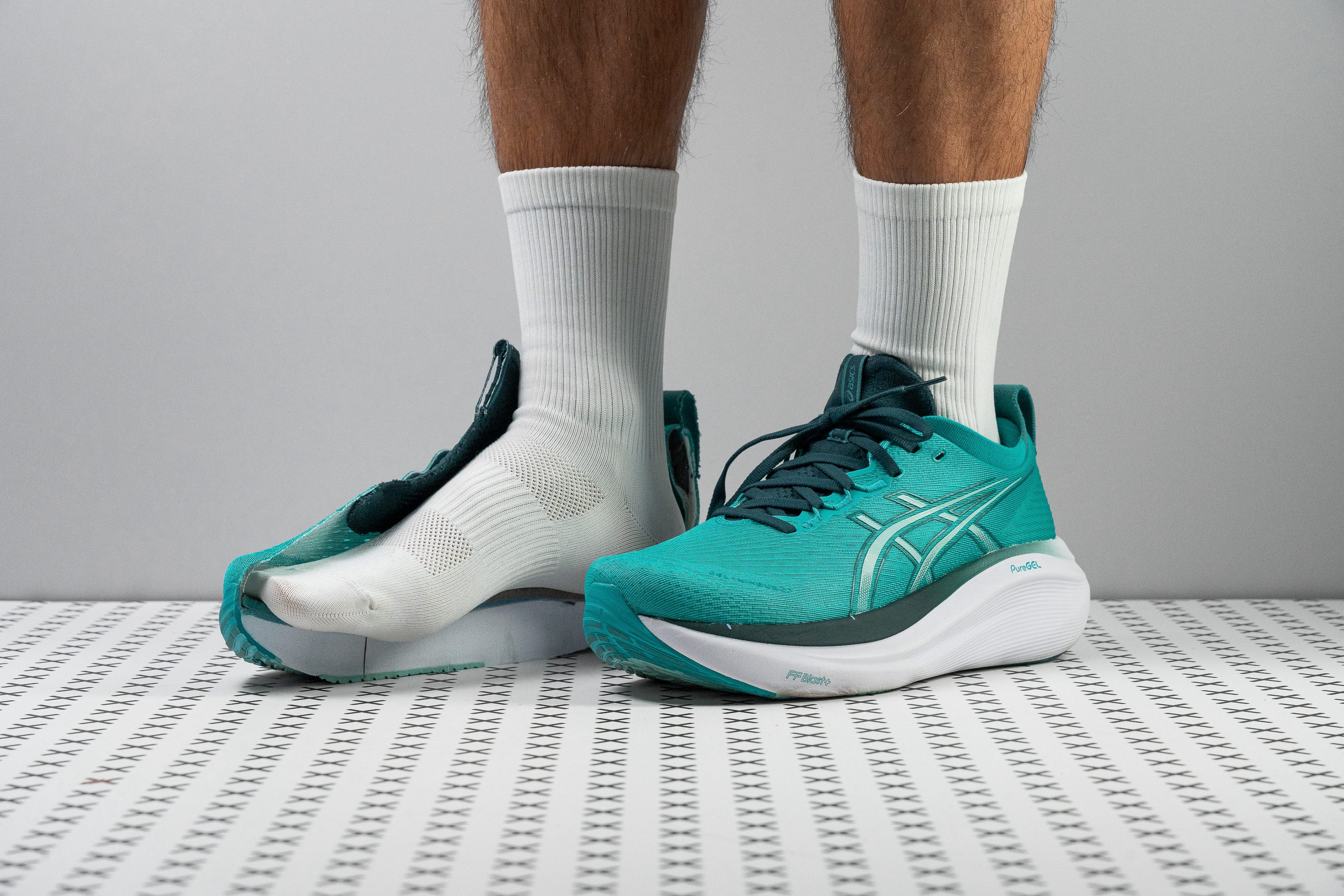


















































What makes it the best?
Among the walking-running shoes we cut in the lab, the ASICS Gel Nimbus 27 stands out for its unmatched traction. In addition, it has divine cushioning that can take the beating of repetitive impact, which made it such a pleasure to wear.
We have to start with the Gel Nimbus 27’s grip because it set a new standard in the lab. With its high 0.84 friction score, it’s wildly 82.6% grippier than average, explaining why we could handle wet pavements with smooth control.
The shoe has the visual bulk, yet we’re blown away by the amount of foam it has. Our measurements with the calliper unveiled a towering stack height of 42.7 mm, boldly surpassing race limits. Even the forefoot won’t have much ground feel with its above-average 34.4 mm stack.
On top of this, the heel includes the PureGEL technology to facilitate gentler landings. In our shock absorption test, both the heel and forefoot recorded an above-average result of 136 SA, proving it’s joint-friendly.
What we noticed is that the shoe lacks the natural feel needed to enjoy long hours of walking. Our bend test confirms it’s even 34.7% stiffer than the average running shoe. Those who prefer more flexible shoes should check alternatives.
Pros
- Even more foam underfoot!
- Premium-feel, breathable upper
- Fantastic stability
- Improved toebox with extra wiggle room
- Flexible knit tongue
- True maximalist comfort for recovery runs
- Amazing heel lockdown
- Top-tier grip
- Top-tier grip
Cons
- Feels bulky and heavy
- Minor price increase
- Lacks energy return
- Minimal outsole coverage
Best budget running shoes for walking
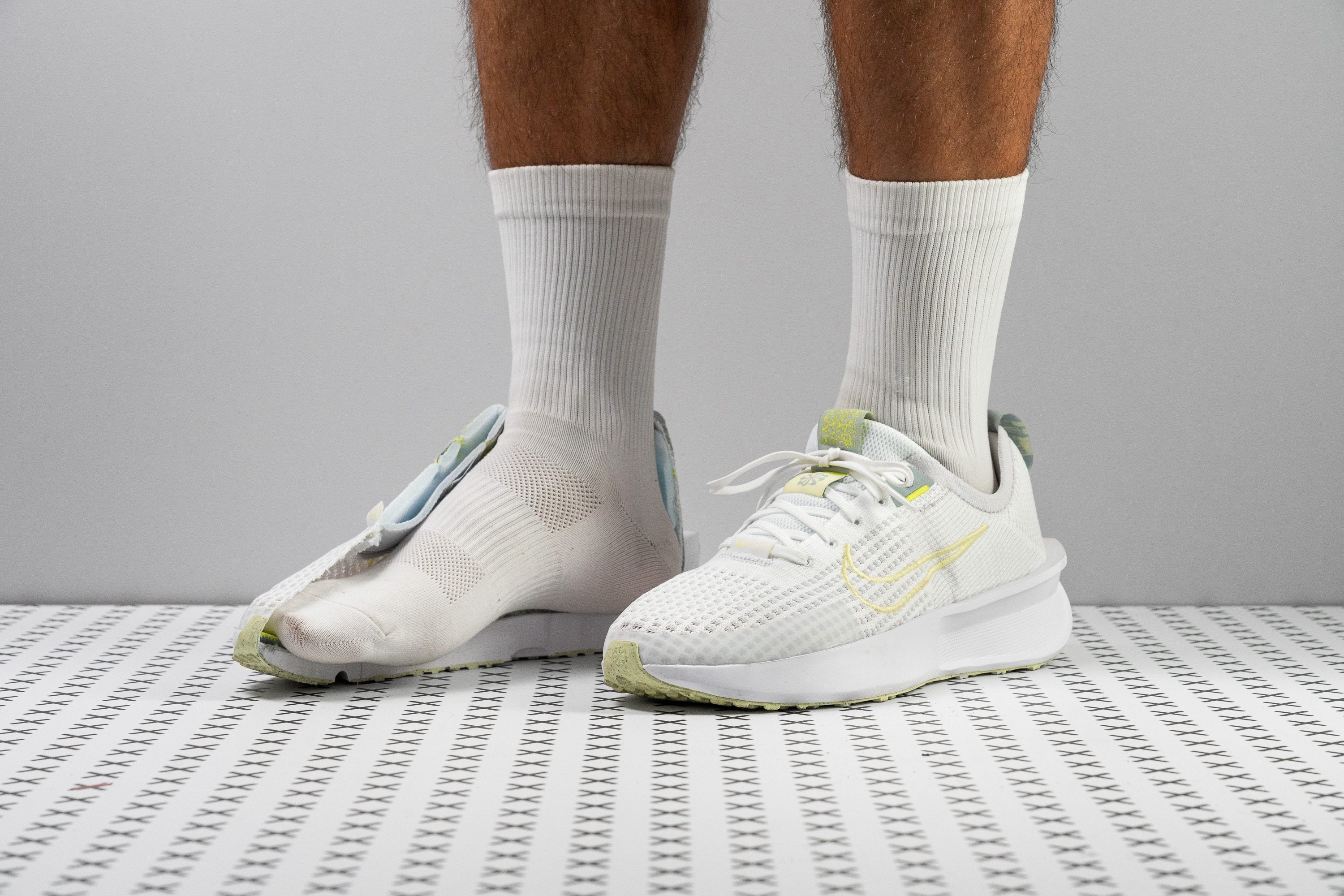



















































What makes it the best?
After intensive testing in and out of the lab, we found the Interact Run from Nike to be the ideal budget shoe for both walking and running, with an £90 price tag vs. the £150 average. What a steal for all that it offers: a smooth and natural ride and a premium Flyknit upper offering both breathability and protection.
Interact Run offers a soothing sensation through its light and loose midsole. Our scales reveal it’s only 8.5 oz (241g), making it 9.1% lighter than average. Moreover, its pliable midsole adds to its gentleness, emerging 17.1% more flexible than average in our bend test.
Even the upper feels soft to the touch, embracing us comfortably. Surprisingly, its plush Flyknit material didn’t inhibit airflow and kept our feet refreshed throughout the day. Our smoke test confirms its maximum breathability with a 5/5 rating. Contrary to expectations, it also proved to be wear-resistant, scoring the maximum 5/5 for toebox durability.
However, the outsole offers limited durability. One shoe can’t offer it all, so those who want daily beaters should go for a more durable pair.
Pros
- Ideal for hot climates
- Perfect for everyday life
- Exceptional comfort
- Fantastic value
- Great for beginners and heel strikers
- Flyknit upper under $100!
- Really lightweight
- Upper durability
Cons
- Not very bouncy
- Outsole lacks grip
- Only for short and easy runs
Unsurprisingly, the best running shoes are also excellent walking shoes. Many essential shoe features remain unchanged, no matter your speed.

However, that doesn’t mean all running shoes are suitable for more pedestrian pursuits. And running shoes are increasingly designed around performance-oriented features, sometimes at the expense of their walking versatility.
Here is how to identify and choose among the best running shoes that are still fit for walking.
4 features that make running shoes good for walking
Whether you’re walking or running, the best shoes do the same things well: they are comfortable, durable, supportive and stable, and (hopefully) stylish enough to be more versatile than your typical pair of running shoes. Let's explain all of these features in greater detail now.
1. Finding comfortable running shoes for walking: stack height, midsole softness, and shock absorption
Adequate midsole cushioning, flexible and breathable upper construction, and ergonomic footbed design are nearly universal qualities of every great running shoe. These qualities make for the best walking shoes, too. When talking about the cushioning, we refer to the stack height or how high off the ground we walk, the softness of the footbed, and the shock attenuation.
The most comfortable running shoes for walking tend to have average-to-high stack heights (midsole thickness). A comfortable walking shoe's optimal heel stack height ranges from 30 to 40 mm. Low-stack (minimally cushioned) shoes provide ground contact and feel light and nimble, but are not very comfortable for walking or working on your feet, especially if you're not already used to them.
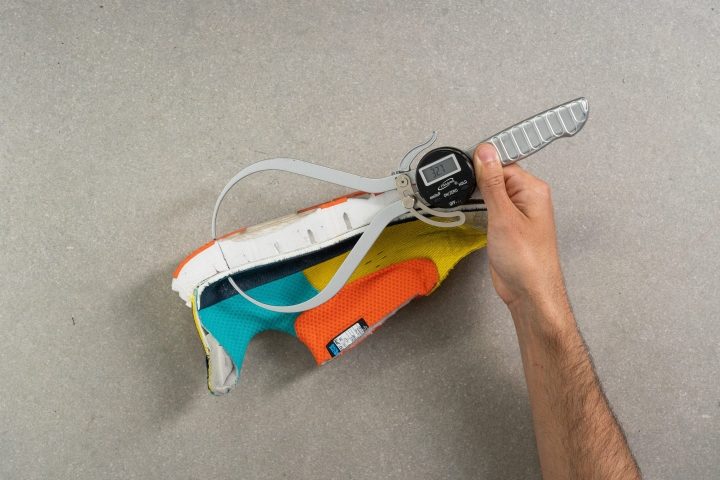
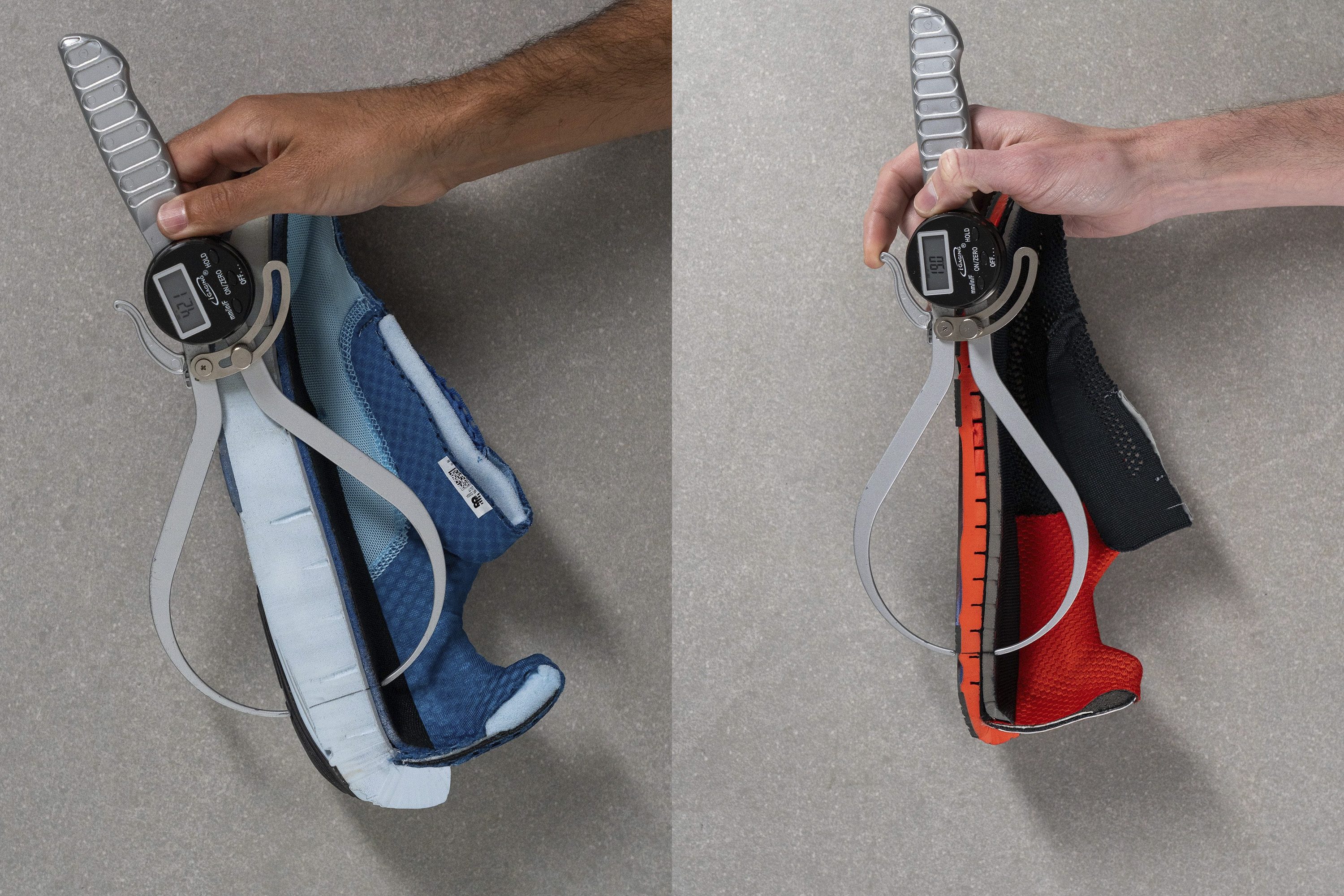
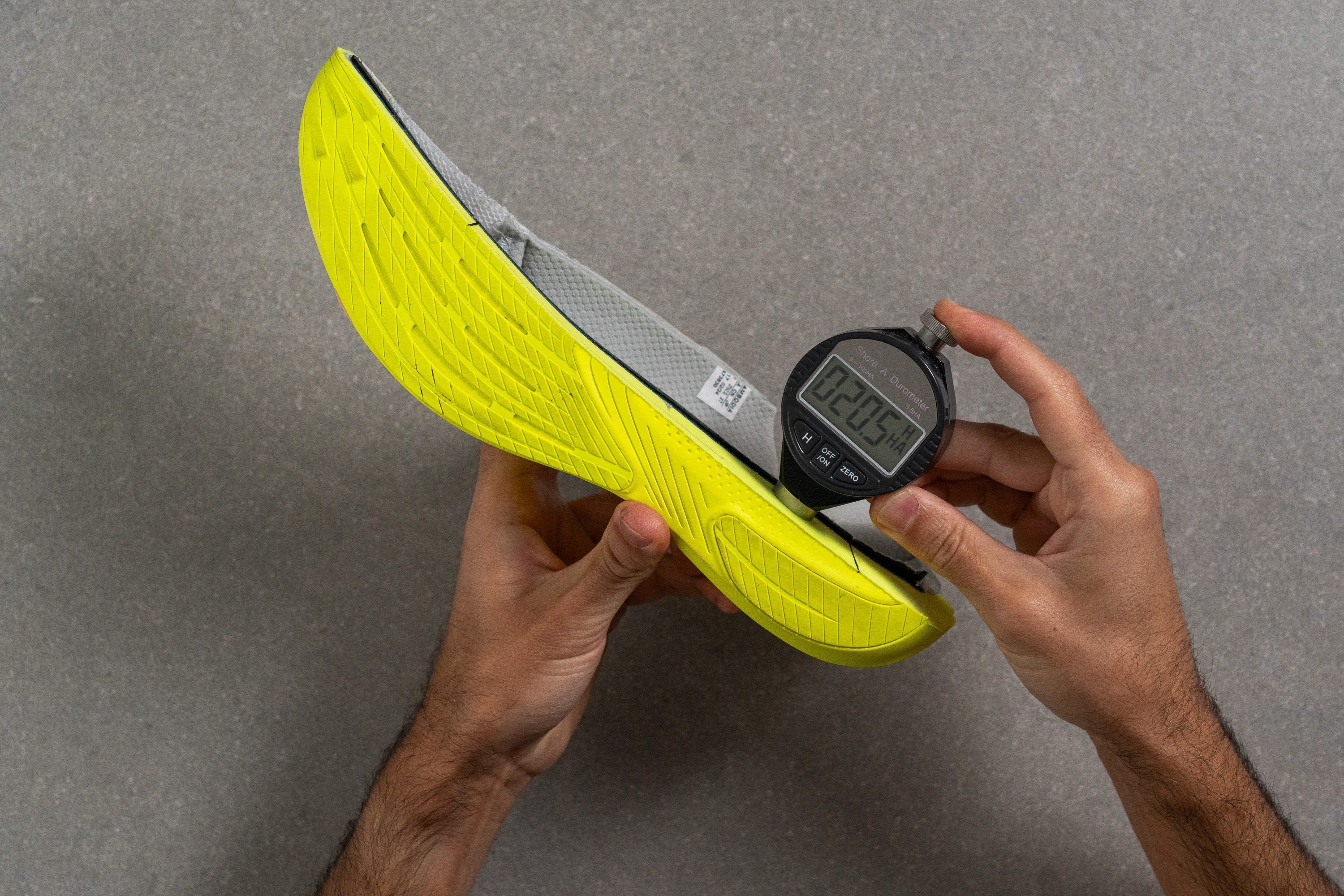
In most cases, people will say soft shoes are the most comfortable ones. However, some running shoes are so soft they bottom out and cause premature fatigue. On the other hand, shoes can be so firm they start hurting our feet. So, it's about finding the right balance between responsiveness and support.
Even when the midsole is firmer than average, walkers love a thick, cushioned insole! Another thing you can always check in our reviews is the thickness of the insole.
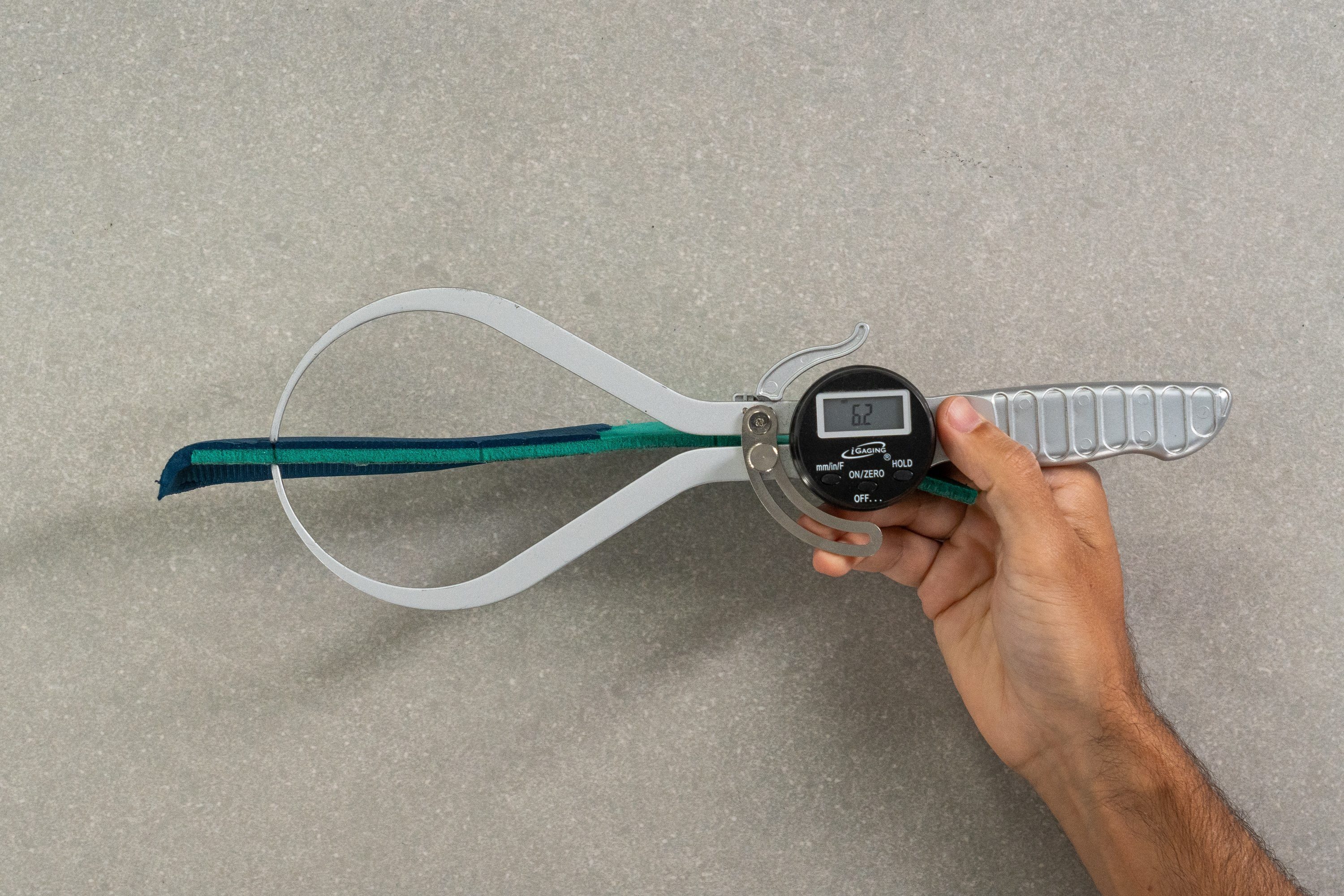
If you have a favourite set of insoles and always use them in whichever footwear you wear, we've got that covered as well, because we always note whether the insole is removable or not.
However, shock absorption best sums up the overall midsole experience: It tells us how well the foam is at dampening the impact. Simply, it tells us how protective the midsole is.
2. Durability of running shoes for walking
Durable running shoes are often even more durable when used as walking shoes. This is because walking creates significantly smaller impact forces than running, so it takes longer to compromise the material integrity of a shoe’s midsole foam and outsole. Compressed midsoles typically spell the end of a running shoe’s useful lifespan, as they will no longer absorb and distribute shocks effectively.
| High-quality and durable running shoes last for at least 500 miles. If you use them mostly for walking, it is possible to double that mileage. However, you may not see any signs of wear and tear but if you start experiencing premature fatigue or discomfort in your feet and legs, it's best to try a new pair of shoes as well and experience a new foam. The old one might be done even though it looks good! |
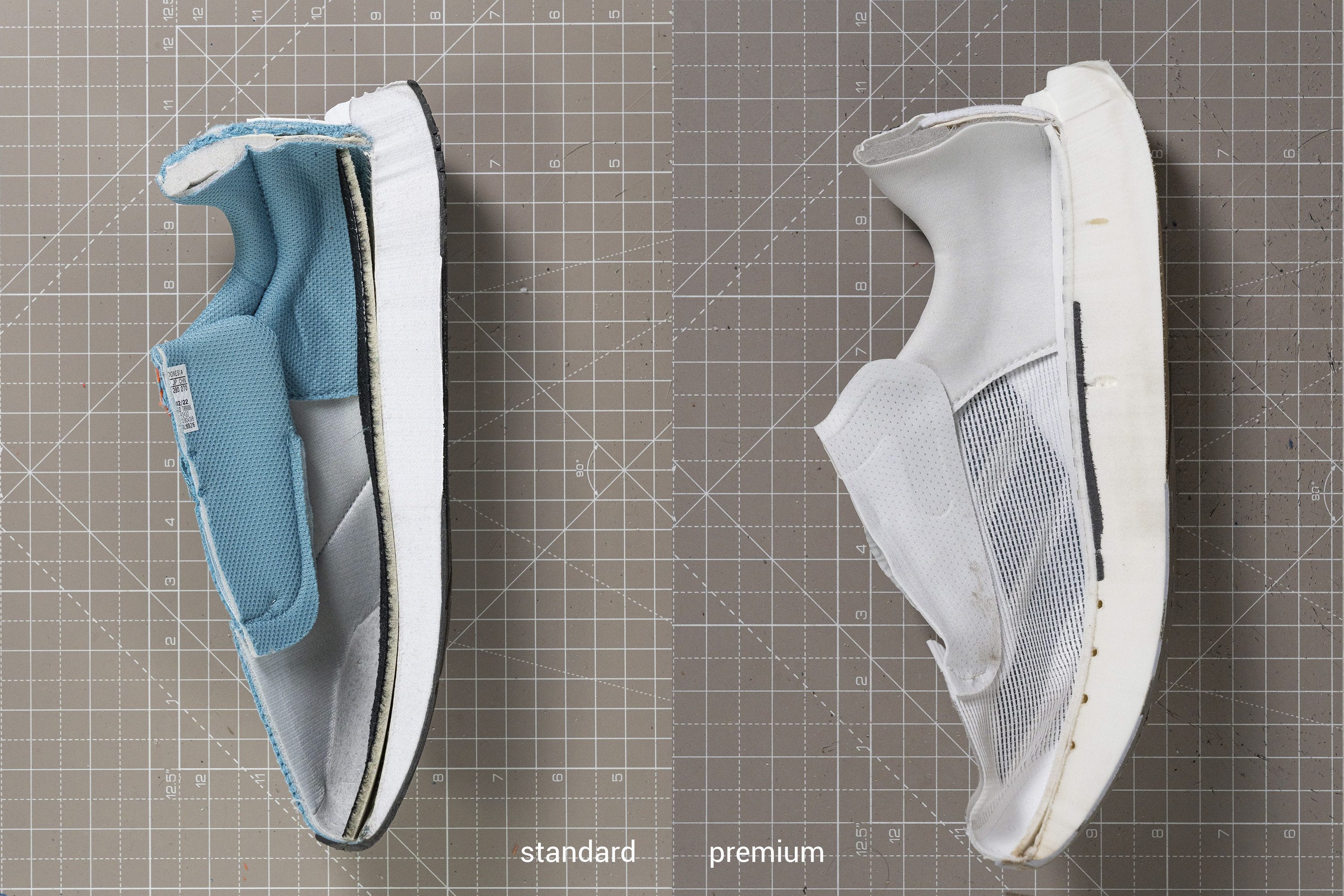
If you care about midsole durability the most, we suggest looking for daily trainers with standard foams. There are pros and cons here though: standard foams are more durable but less responsive. Premium foams, on the other hand, offer more energy return and leg-saving features, but they are more expensive and less durable.
We've written the most extensive running-shoe-foam guide in the world, so if you want to dig deep, we could not recommend The ultimate guide to running shoe foams more!
In our lab, we test the durability of 3 different parts of the shoe: toebox, heel padding, and the outsole. We use a Dremel and we've standardised all these tests so that each shoe gets treated evenly: the same pressure, RPMs and time duration!
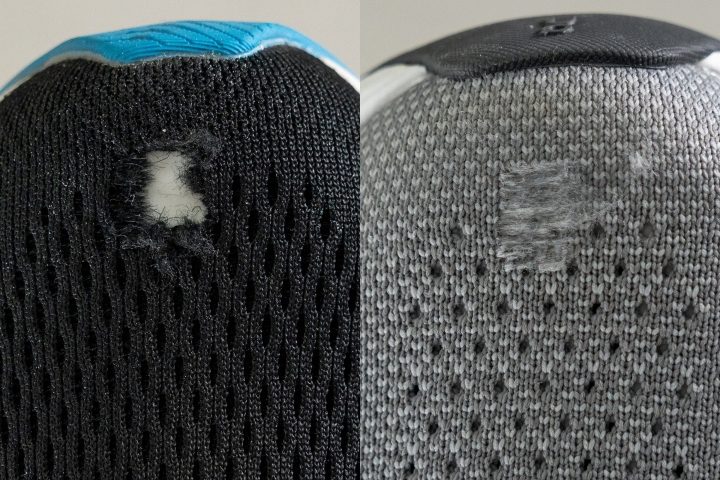
On our website, you can find dozens of running shoes for walking that scored the highest (5/5) for toebox durability and heel padding durability.
Then, we test the durability of the heel padding. The durability of this part of the shoe depends on the material and shoe build quality, but also on a) the frequency of the shoe use, b) how you put them on - with a shoe horn or without, c) whether there's any heel slipping while walking.
Just like in the toebox durability test, here we assess the durability on the 1-5 scale and assign 1/5 rating for the least durable heel area and 5/5 for the most durable one.
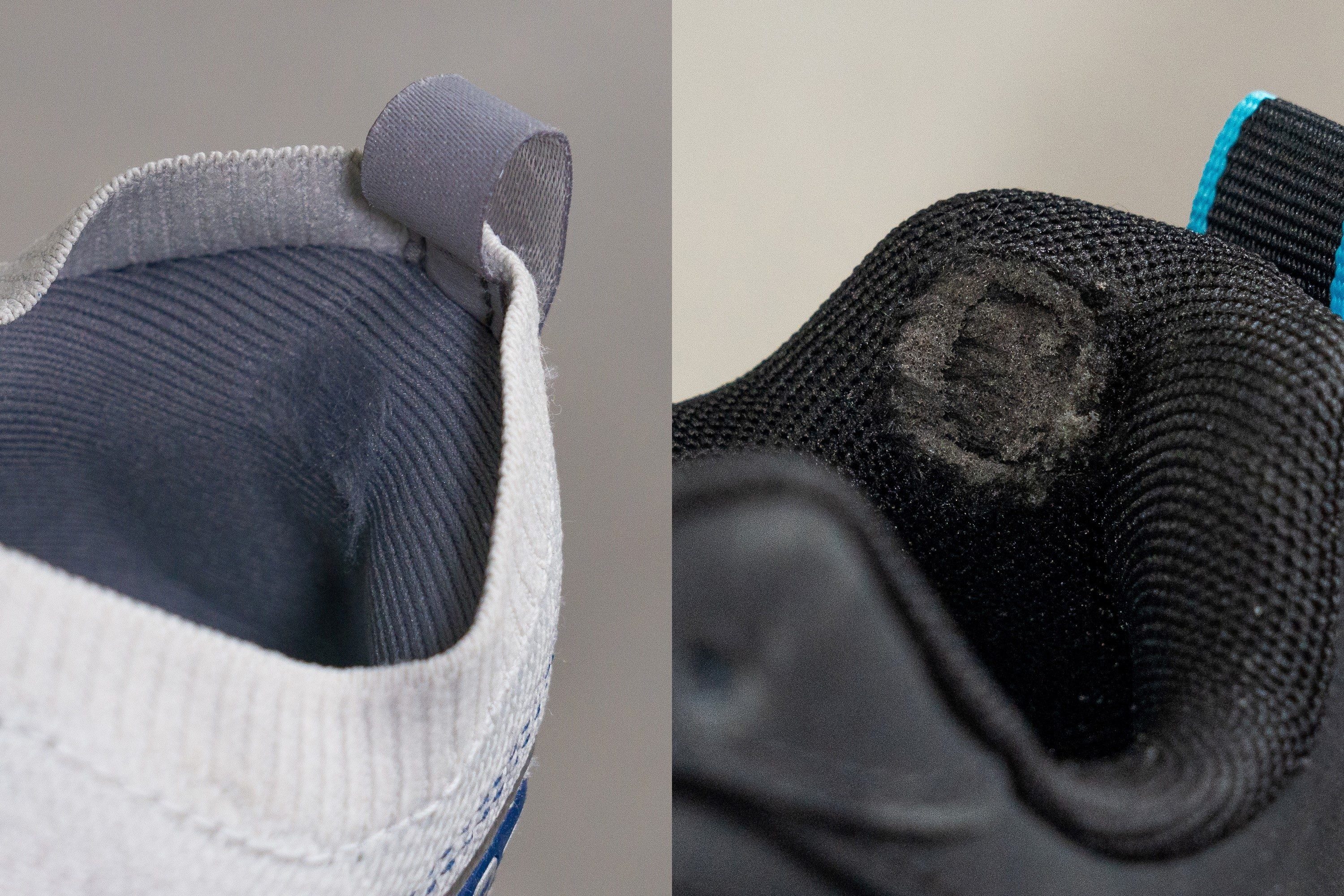
Last but not least is the durability of the outsole. Again, we use our Dremel to simulate the wear and tear.

In this case, we're able to precisely measure the depth of the dent instead of assessing it. The material of the outsole allows us to do that, so we use a tyre tread gauge and have accurate numbers on the display. The lower the number, the more durable the outsole!
3. Support and stability of running shoes for walking
The support features you need depend on personal preferences and your unique biomechanics. Fortunately, the shape of your foot remains the same—whether you’re running or walking. If you need extra arch support or stability features to correct overpronation, you will benefit from wearing those supportive shoes called stability shoes for both running and walking.
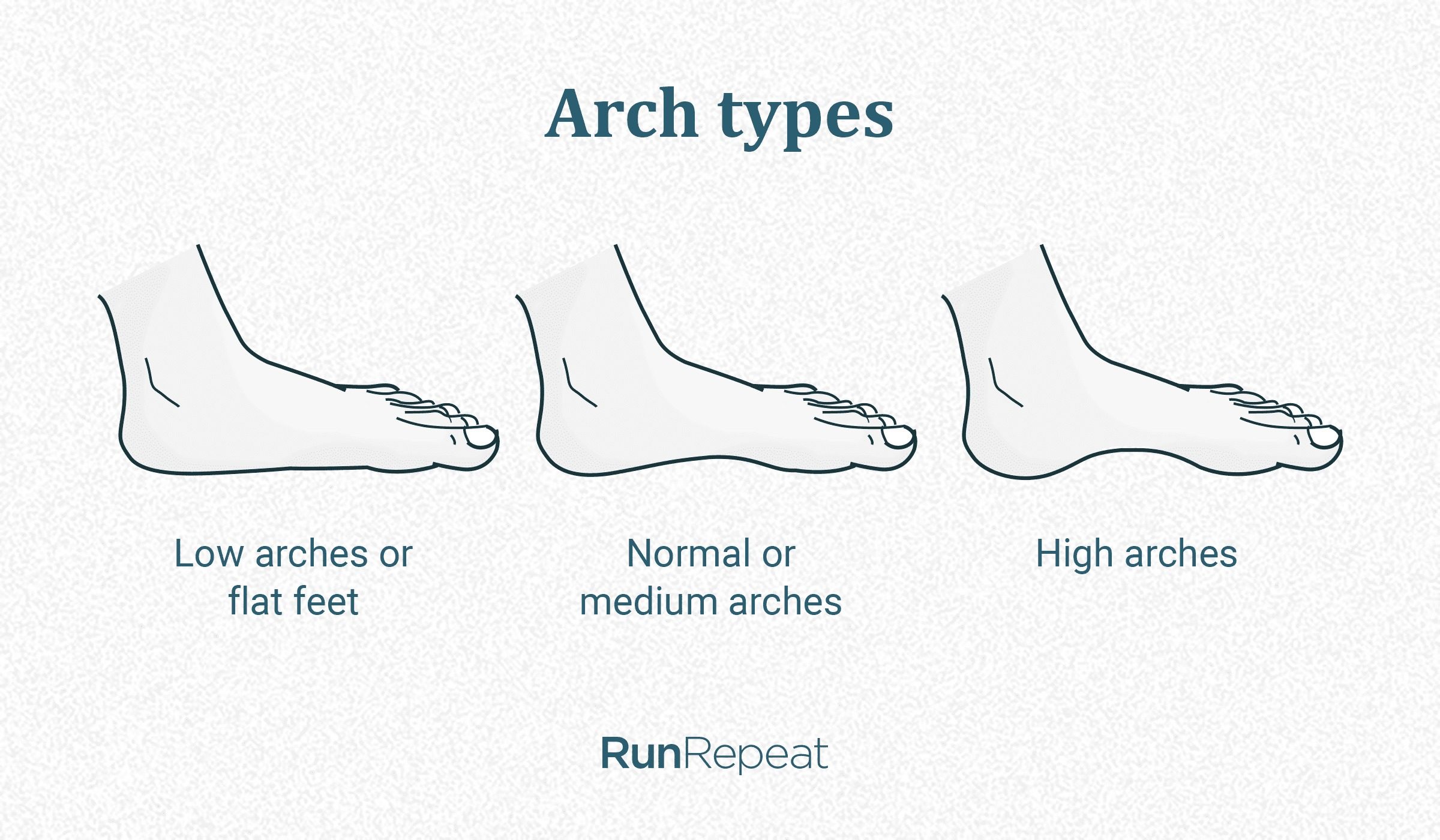
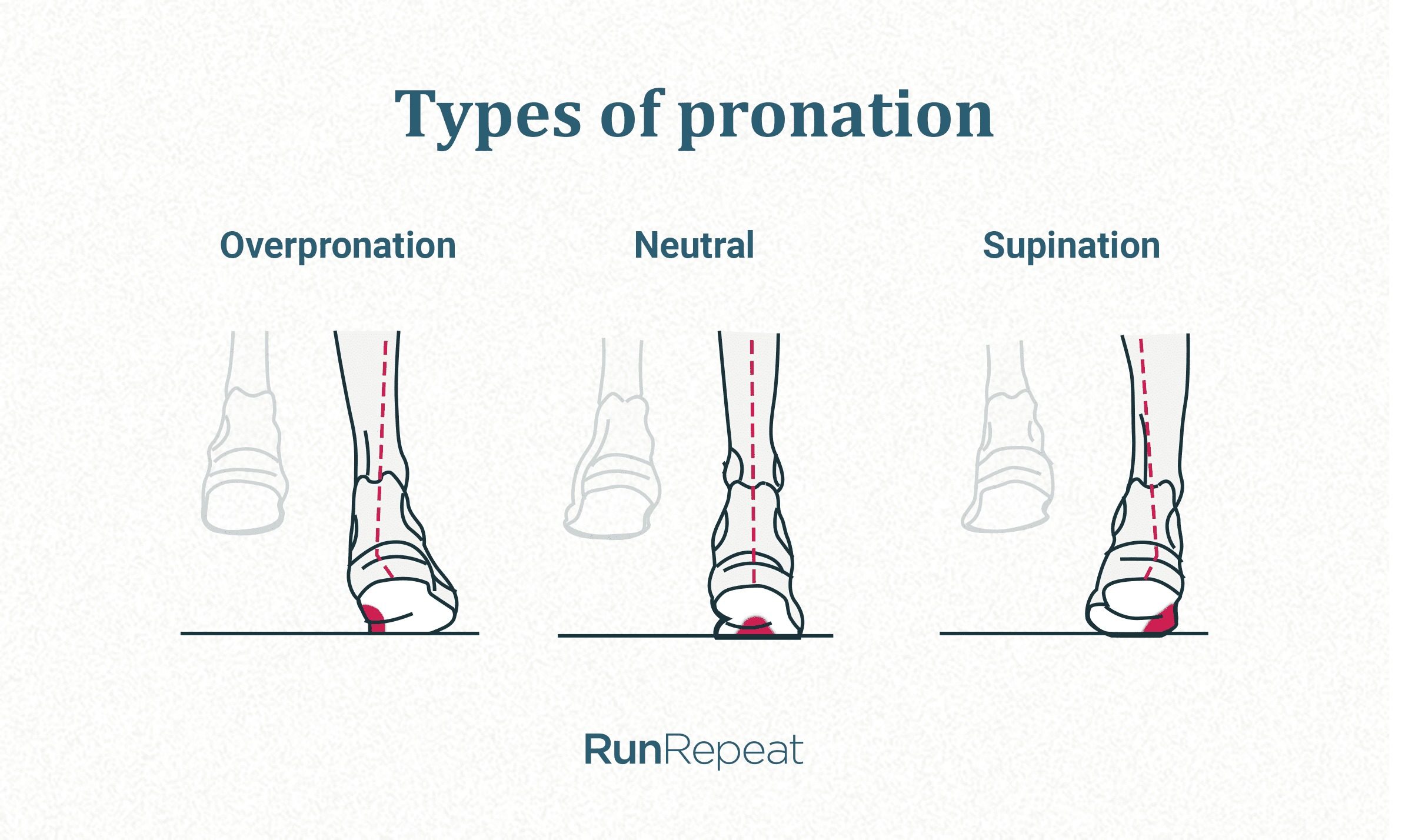
What makes these running shoes different is the overall design: they have specific, often trademarked technologies that stabilise the heel and prevent the arch from collapsing inwards (to a certain degree).
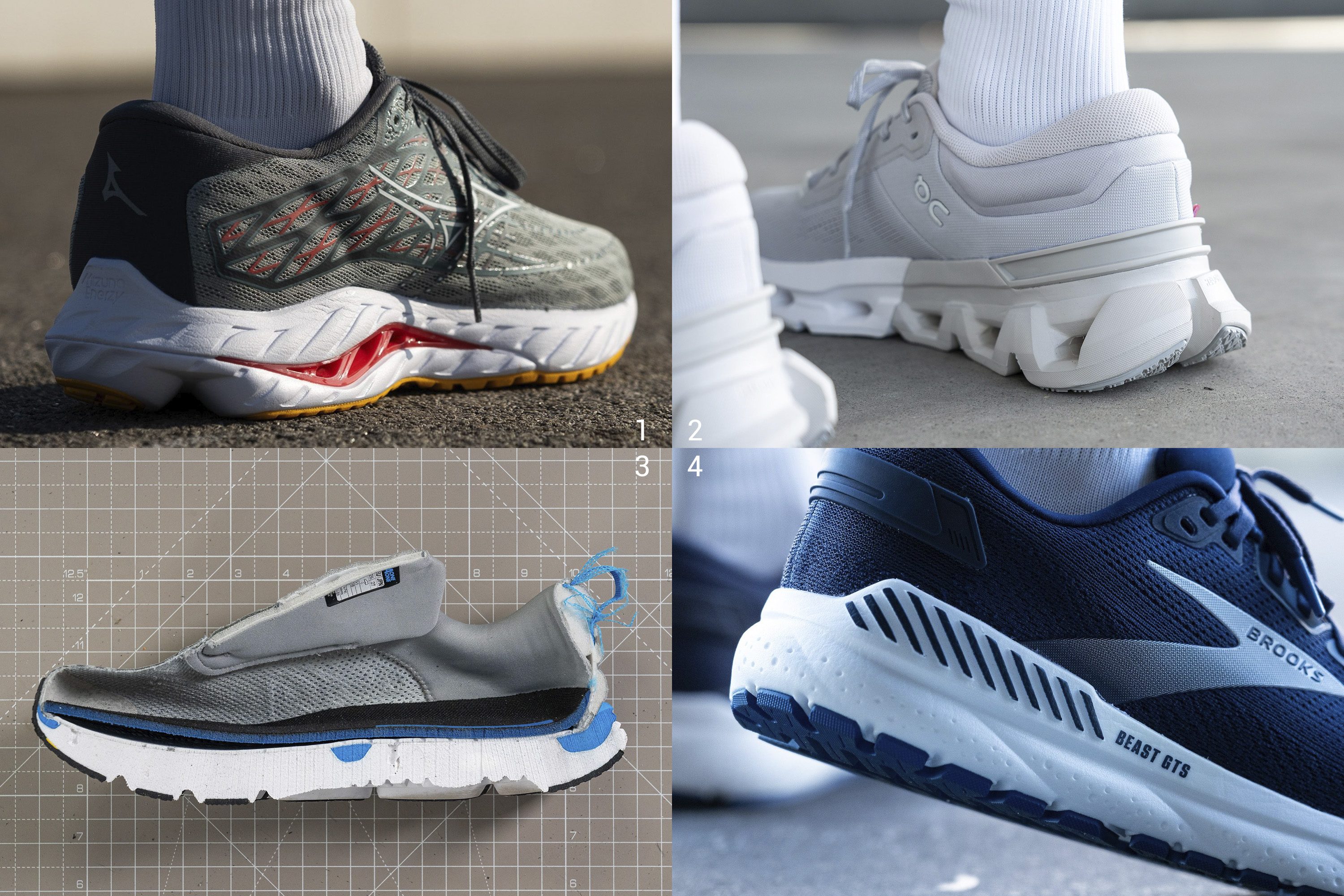
| If you're not sure about arch support, whether you needed it or how much, we recommend reading our in-depth guide Arch Support for Runners: What, How and Why. |
One of the features of stability running shoes for walking are known for is the wide platform. This is something we can also find in neutral running shoes for walking that are simply stable! No extra stabilising technologies for fallen/flat arches, but simply stable on varying terrain.
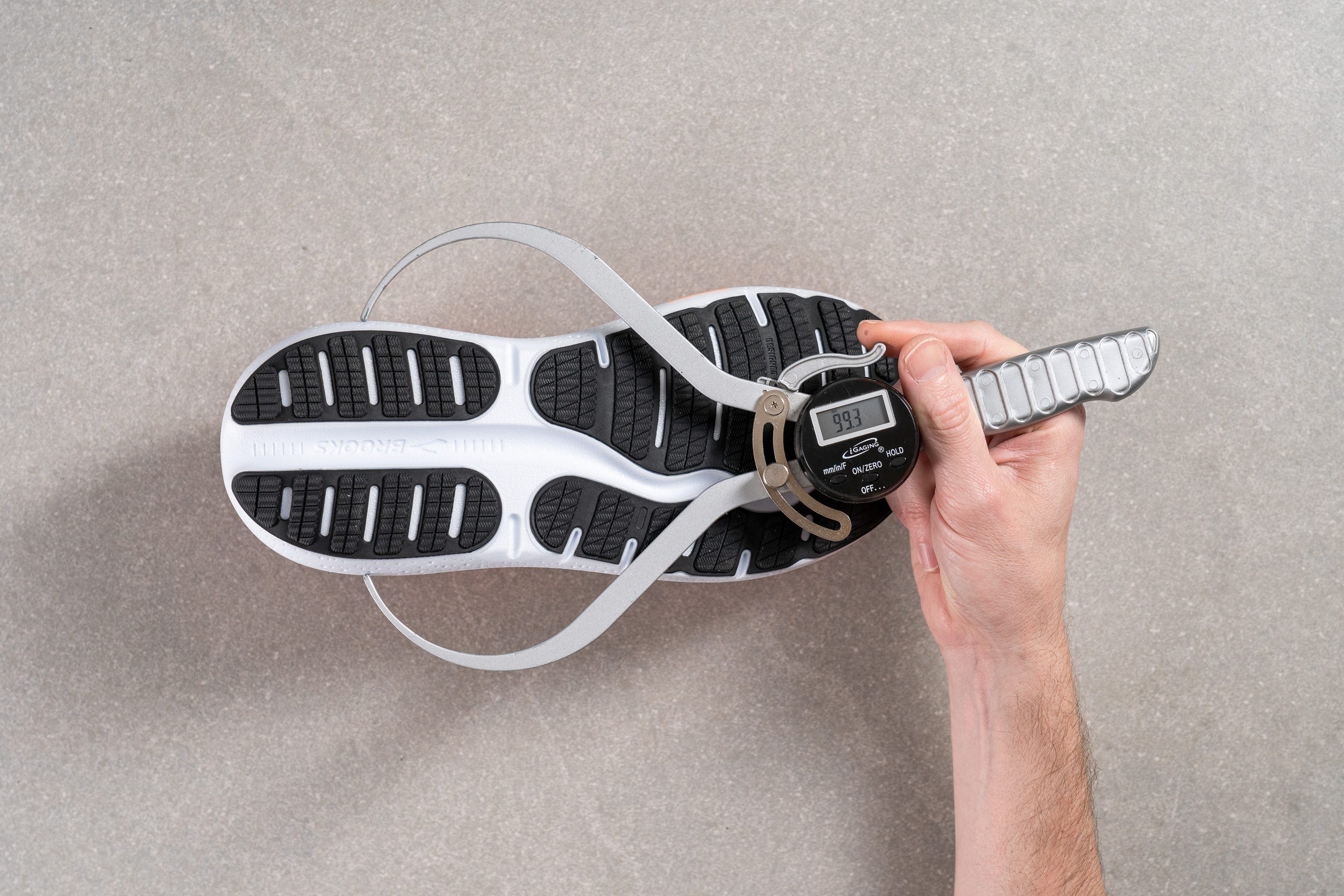
If you want extra stable running shoes for walking, we suggest looking for those with very weight platforms. However, avoid the extra chunk, so consult the weight column as well!
4. Style: colours, materials, and design
Neon green and orange running shoes look slick if they’re paired with split shorts and a race bib. But they’re a little more conspicuous than desired for a casual weekend stroll through town. The best running shoes for walking tend to reign in the bright colorways in favour of more versatile styles.
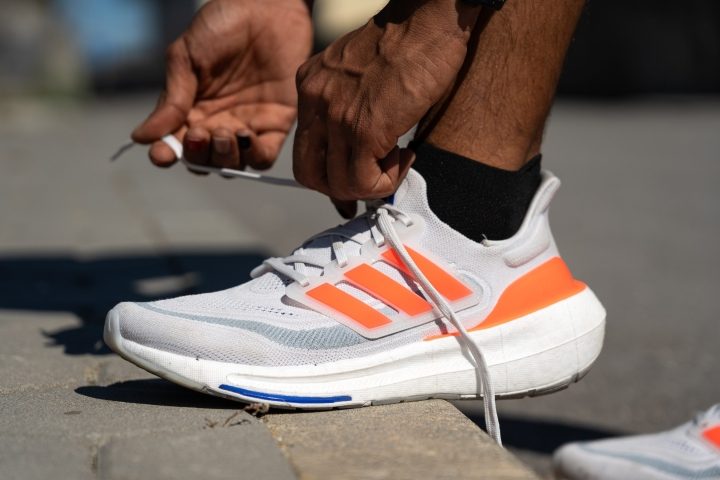
Running shoes for walking for women, obviously, often have more variations in pink, red, orange, and similar colours. Some look more casual, but it's all up to a personal preference.
2 features to avoid in running shoes for walking
Although similar in many ways, the biomechanics of a walking and running stride still have some remarkable differences. With innovations in shoe technology, designers are increasingly targeting the biomechanics of running specifically. As a result, many modern running shoes do have features that make them super-optimised for running but not ideal for walking.
Some features to avoid when choosing running shoes for walking include carbon plates and advanced PEBA-based foams.
Carbon plates
High-end performance-oriented running shoes feature a thin carbon plate above the midsole. These ultralight plates maximise stride efficiency and encourage a quick heel-to-toe-off. It makes them a game-changing innovation for uptempo running, but the propulsive effects are actually a bad thing for walking due to the biomechanical movement changes they encourage.
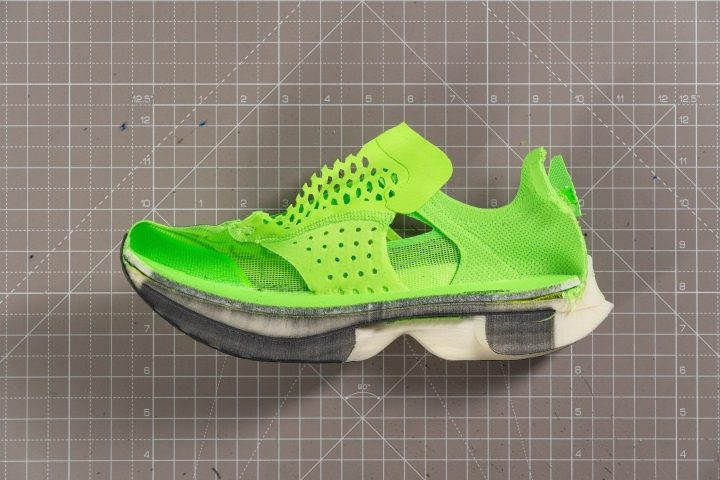
If this topic interests you though, we've covered it in great detail in our guide Carbon-Plated Shoes Cut In Half, Explained and Lab-Tested.
Advanced PEBA-based foams
PEBA (polyether block amide)-based foams are used in many running shoes marketed for race day or uptempo training sessions. They are light, flexible, and bouncy to encourage optimal running efficiency. While helpful for chasing a marathon PR, this efficiency is unnecessary for walking.
We covered PEBA foams in great detail in our comprehensive guide on foams.
Breathability of running shoes for walking
Breathability varies just like the weather conditions and the level of feet sweatiness. So, if your feet sweat a lot and/or you live in a hot climate, we recommend finding the most breathable shoes out there. If, on the other hand, you need more warmth, look for less breathable shoes that trap heat.
Based on how much smoke comes out of the shoe and at which pace, we assign a breathability rating on a 1-5 scale, where 1 stands for the least breathable and 5 for the most breathable.
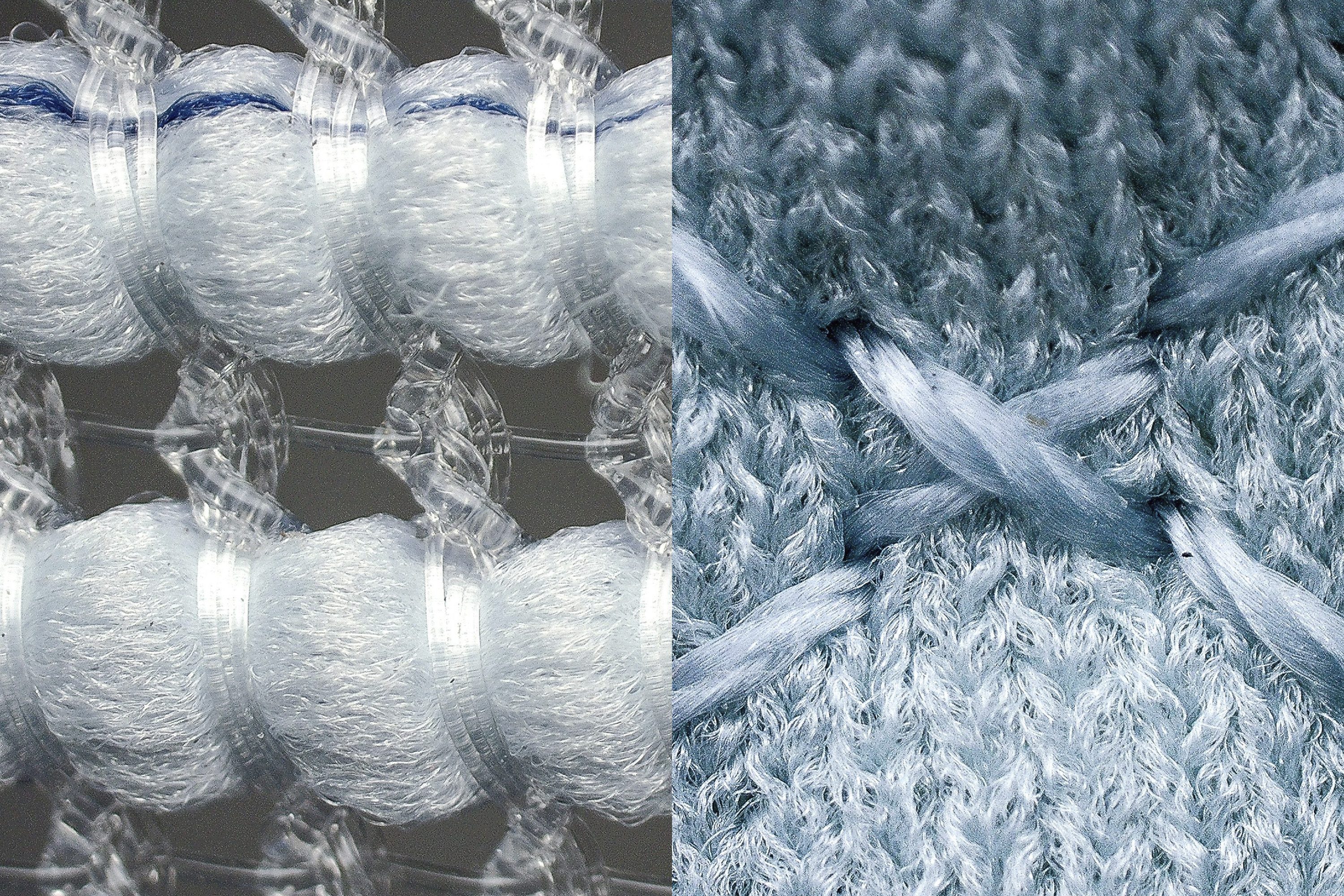
We also examine the uppers in the most incredible detail under our microscope. This allows us to understand the smoke test results better; sometimes, ventilation holes are not visible to the naked eye, and sometimes, we don't see that there are many layers present, which is why the shoes trap heat.
Wide or narrow toebox?
We've already covered the topic of comfort. A perfect fit is a part of that story, although it's one we often overlook as most people already know how to nail the size. When it comes to the width, some people struggle because they have differently shaped feet, maybe a too-wide or too-narrow forefoot. We're here to explain our measurements and how you can use them to filter the shoes that would work for you!
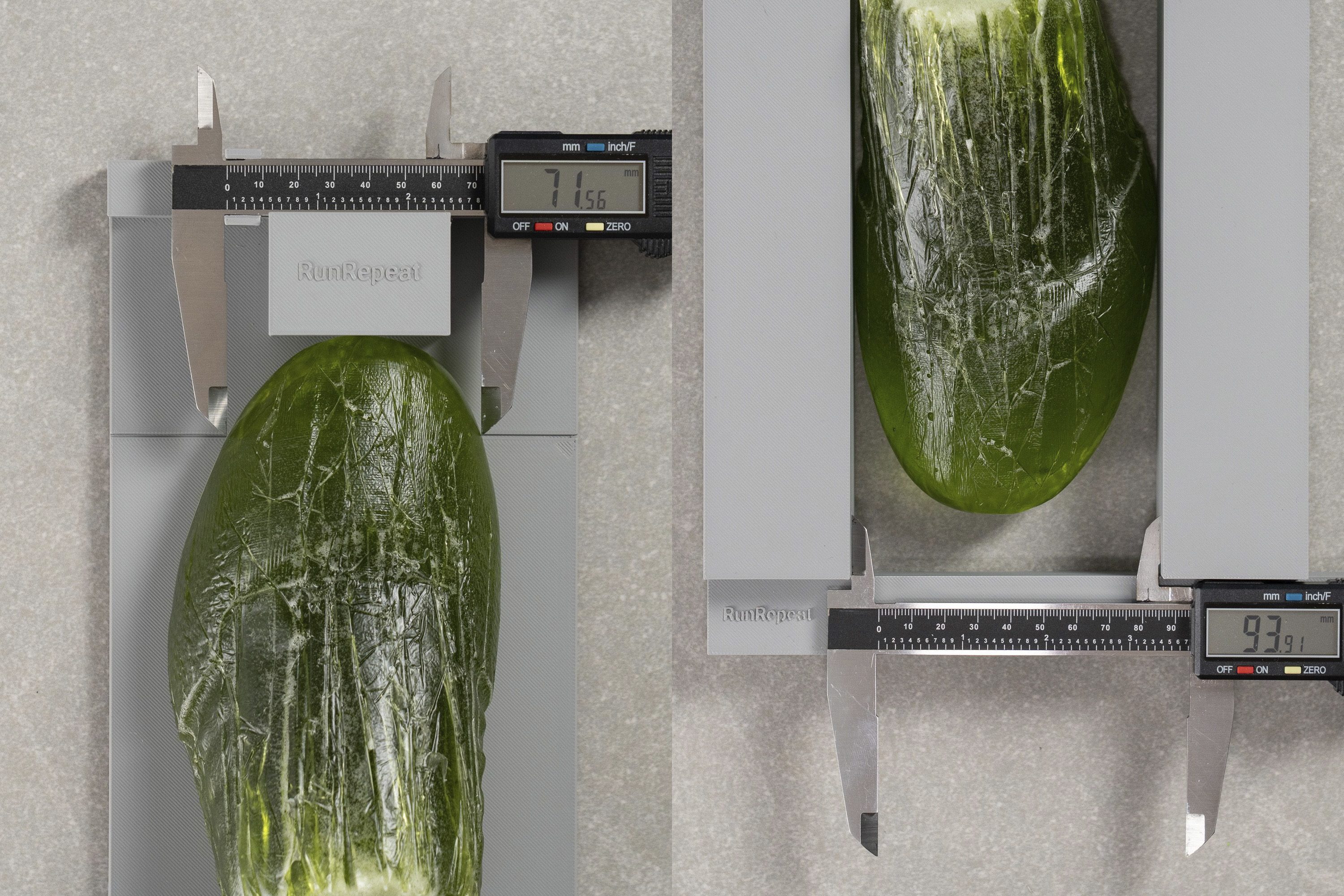
Knowing both measurements matters a lot because of the different shapes of the feet.
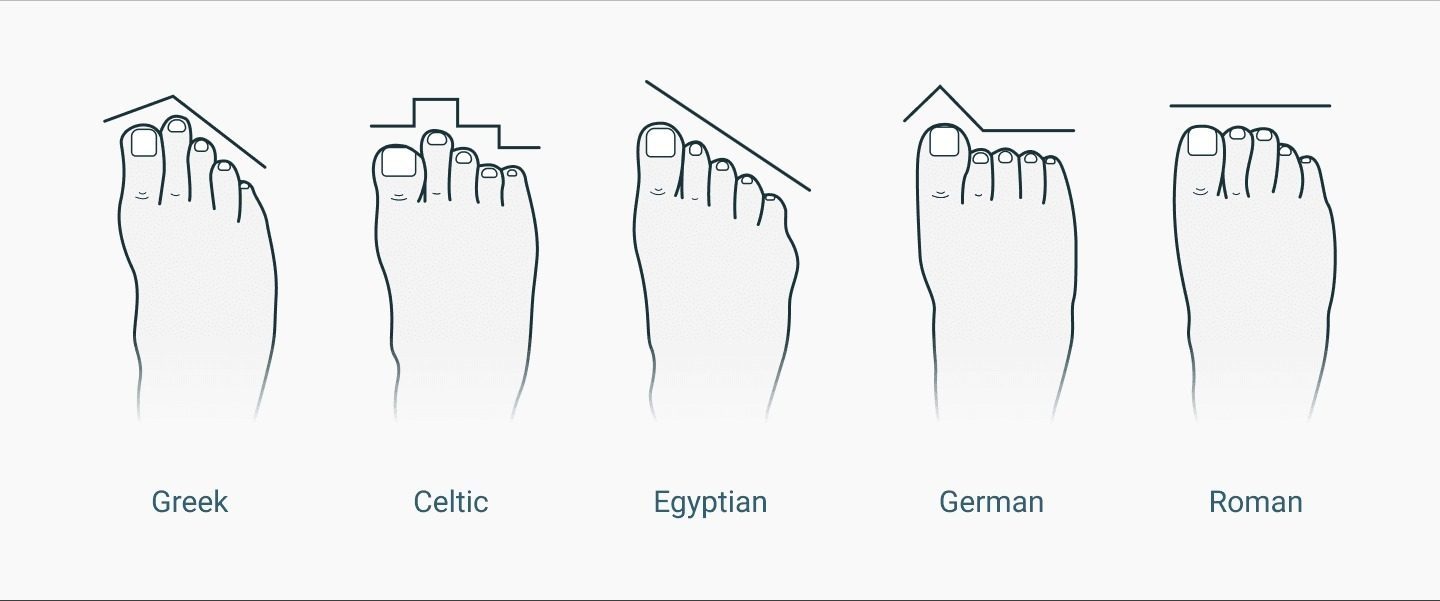
To nail the fit, you may need a shoe with a tapered (pointy) toebox, one that's more foot-shaped (looks squared a bit), or something plain narrow.
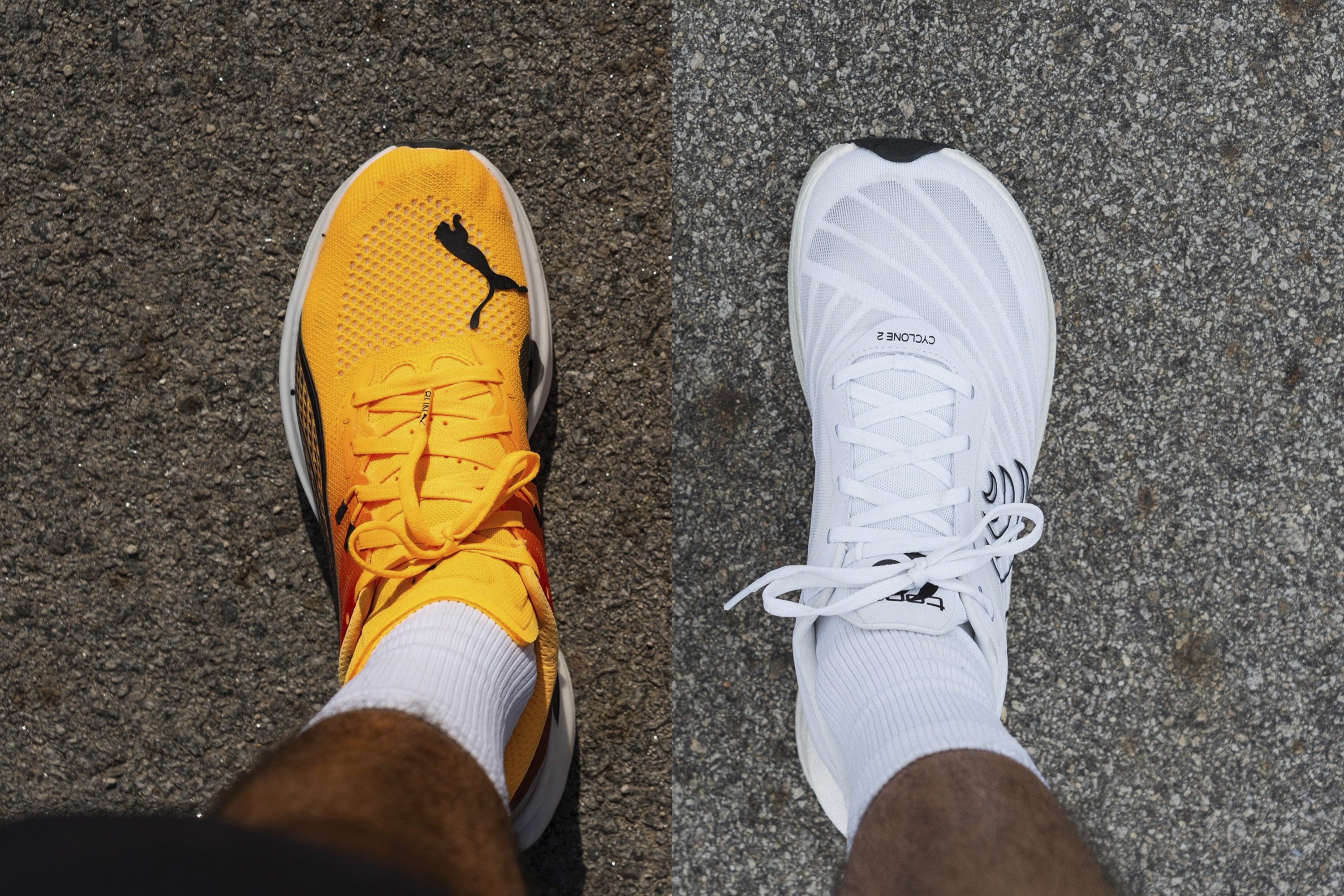
We also measure the height of the toebox in our tests. This is especially important if you have a big toe pointing up, or shoes often squish your toes, and you get black toenails. If that's the case, look for higher toeboxes!
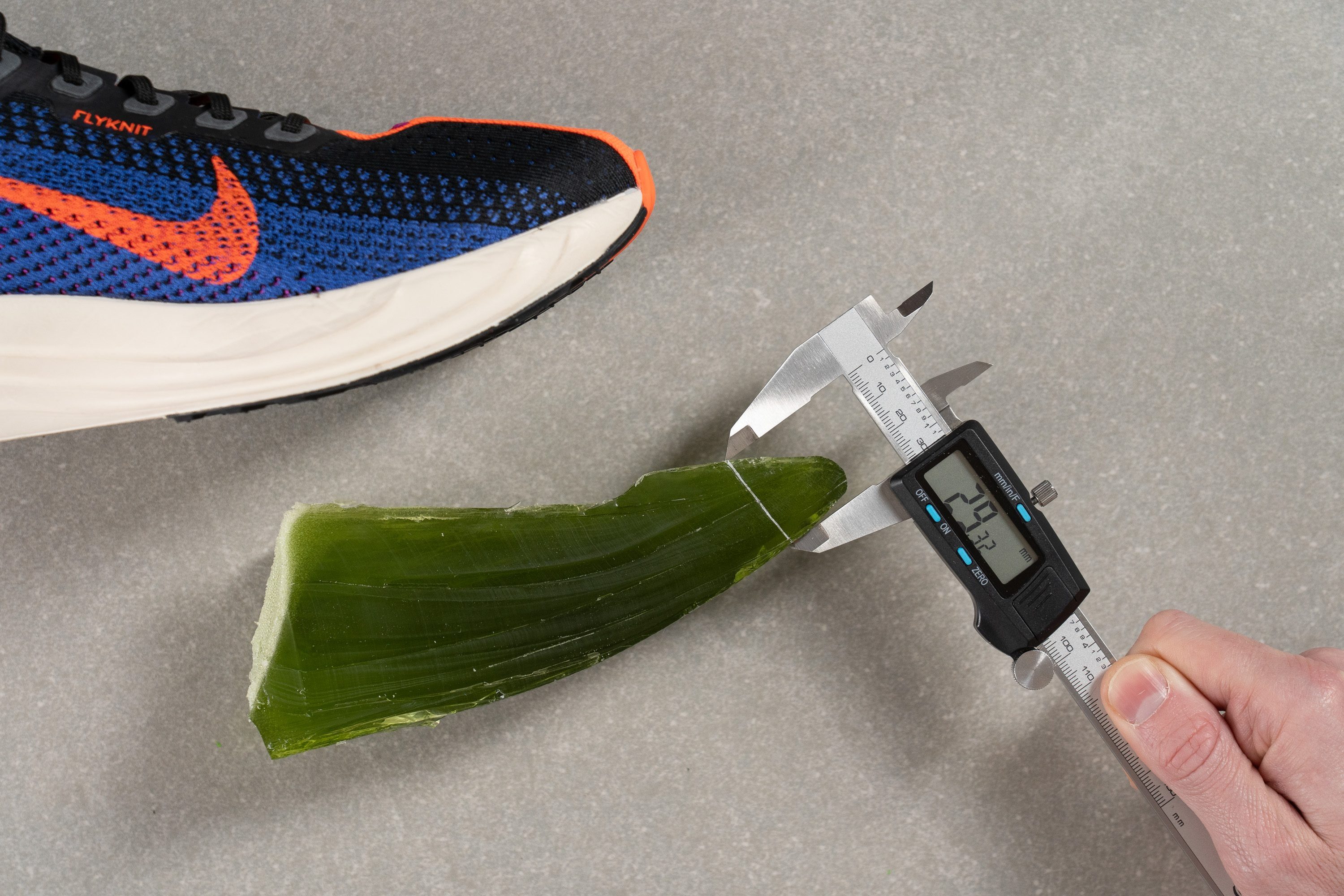
Here's a selection of running shoes for walking if you need the most room at the ball of the foot (usually around the pinkie toe):
These running shoes offer the most room at the big toe, which means they are not pointy but more square-ish:
However, these shoes often feature a low or a zero drop, which usually asks for an adjustment period if you're new to that low drop. Caution is needed if the heel drop is 4 mm or lower! To learn more, read our guide on Heel to toe drop.
In case you have narrow feet, here are the narrowest running shoes for walking:
Rockered running shoes for walking
Running shoes can have a rockered shape to encourage an efficient and propulsive stride. Rockered footbeds that are particularly stiff and aggressive may feel awkward while walking.
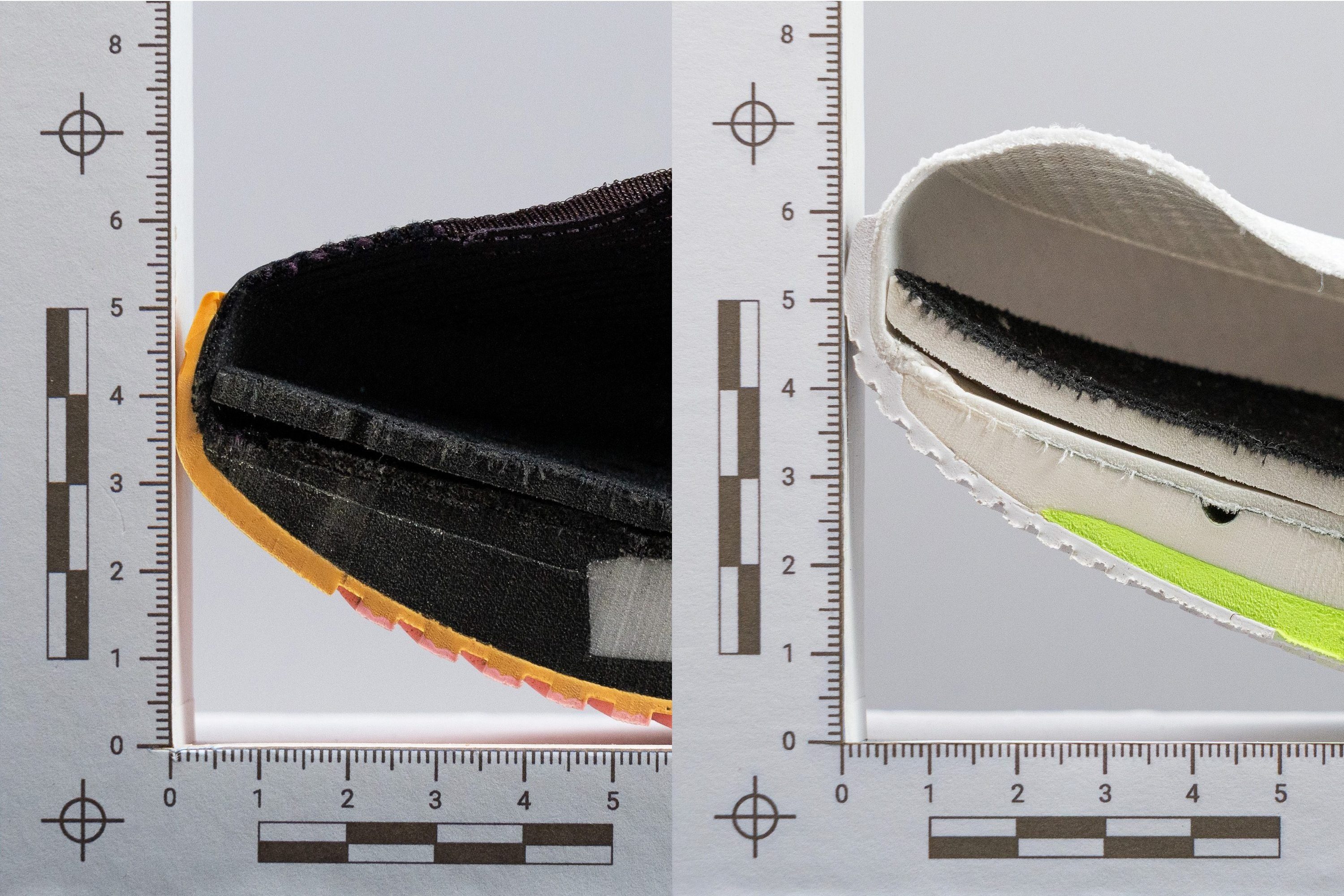
But there are rockered shoes that feel great. Keep in mind you might need time to get used to rockered running shoes.
| Rockered running shoes can work great for those who are dealing with forefoot or toe pain, plantar fasciitis or heel pain, issues with Achilles tendon or limited ankle movement. Those who struggle with knee or hip pain tend to avoid rockered shoes. |
If you want to learn more (all) about rockered running shoes, we highly recommend reading our guide All you need to know about rockered running shoes.
FAQs
Can I use trail running shoes for walking?
Trail running shoes can make for excellent walking shoes, especially if you are walking primarily on natural surfaces. Indeed, many hikers and backpackers now prefer the comfort, breathability, and traction of trail running shoes over heavy and clumsy hiking boots.
In case you want to enter this world, we'd recommend hiking shoes with shallow lugs (up to 3mm). The shallower the lugs, the less you'll feel them if you plan to walk on hard surfaces like asphalt and concrete. Also, keep in mind that these shoes will last shorter if you wear them on hard surfaces because it's not the terrain their were made for.
Are low-drop running shoes appropriate for walking?
Low-drop running shoes can be good for walking, but like most things, it depends on your stride and personal preferences. Higher drop (10-12mm) shoes encourage heel striking, which puts more strain on the thighs and hips, but less on the calves and foot muscles. Low-drop (0-5mm) shoes do the opposite. Low-drop running shoes often feature a wider toebox as well.
If you want to give these running shoes a try, we recommend reading our guide on heel to toe drop first!

